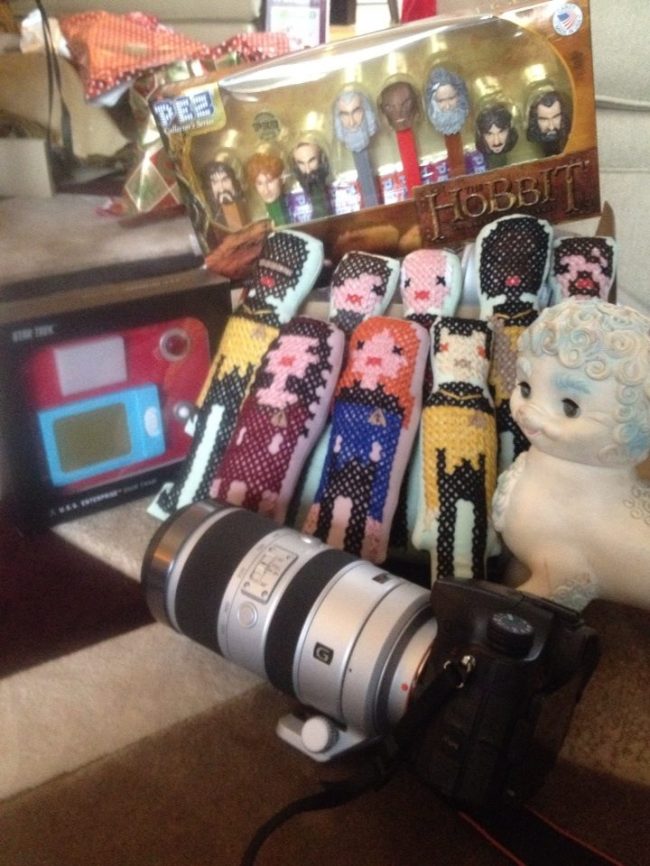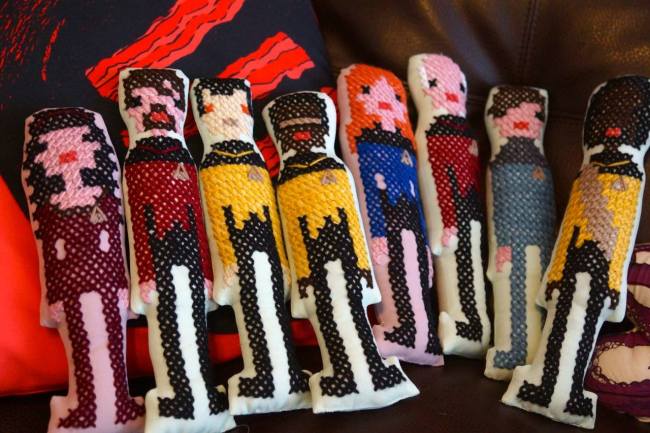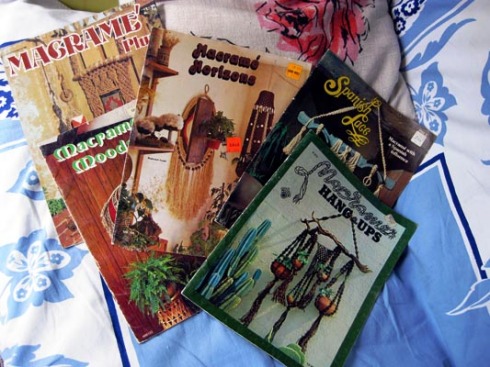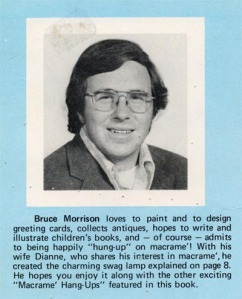I made these cross stitch Star Trek TNG dolls as a Christmas gift for my sister. She appreciates such things, so tends to net a fair amount of handmade whatnots from me.
I used a cross stitch pattern from weelittlestiches, so they deserve all of the credit.
We watched a lot of TNG growing up. So much so that if you look back on the history of all the dudes I had crushes on during my youth, 75% of them were Riker types. (My husband is a Jewish Riker type). The other 25% were Christopher Plummer types, which is why this Sound of Music pattern is in my queue. I just wish it included Rolf, who is the Wesley of that particular film.
Anyhoo, the Star Trek dolls were simple but time consuming. Like, on the Duke Sweet scale, I would score it as a “could be done whilst vastly intoxicated” level of simple and a “Waterworld” level of time consumption. That’s 135 minutes per doll.
 Here’s another picture my sister took. This shows the entire gift, which also included a “nightmare lamb” (the key to its creepiness is the eyebrows) and various nerdy things.
Here’s another picture my sister took. This shows the entire gift, which also included a “nightmare lamb” (the key to its creepiness is the eyebrows) and various nerdy things.
To increase the scale of the stitches, I used monk’s cloth instead of Aida cloth and yarn instead of embroidery floss. There is a good tutorial here that explains how to do it. I only made two changes:
- I removed the monk’s cloth after I finished stitching (the strands pull away easily). Dunno, it just looked better that way, not to mention it was super satisfying to rip it out. I think the monk’s cloth Good Knits used was more stable than mine, because mine was slip-sliding all over the place despite basting it.
- I made my dolls “taller”. If you look closely at monks cloth, you’ll see the “squares” formed by the weave are not perfectly equal in length and height. This means the doll will end up with different dimensions depending on how you place the design. I tried it both ways and preferred placing the design “sideways” to make the dolls look stretched out in height. If you do it the other way, the characters will look shorter/wider.
Well, we covered a lot of ground today. Bye.



















